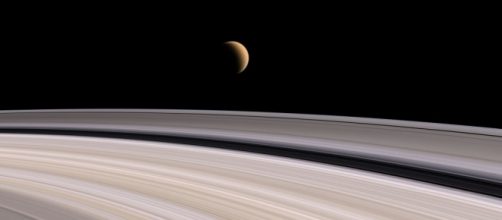The Cassini Spacecraft will soon end its long voyage by crashing into the gaseous and distant planet of Saturn. But before that happens, Cassini was sent between Saturn and its rings making it the closest man-made object to Saturn ever. The spacecraft came within just under 2,000 miles above Saturn's clouds and crashed through one of the thinnest parts of Saturn's rings. The spacecraft is, for the most part, undamaged and will be making another pass through a similar area today on May 2nd.
20 years of travel, billions of miles away
Cassini was launched 20 Years ago with its final destination being Saturn.
Before sending the craft directly to Saturn, it was investigating various Saturn moons. Specifically, Titan and Enceladus. 11 years ago, a different spacecraft passed by Enceladus and picked up signs of salty water at the south pole of the moon, which suggests hydrothermal activity and could possibly suggest a habitat for extra-terrestrial life. If life were to exist on the moon, it would also suggest that life started there independently of Earth. The moon also possesses a global underground ocean hidden beneath an icy crust.
One of Saturn's special moons
Titan is a unique moon found in our solar system and many scientists believe the current state it's in is like the state Earth was in early in its life.
It's thick and hazy orange atmosphere has kept its surface a hidden secret from us, but thanks to the Cassini and the much earlier Voyager mission, we now know so much more about Titan and what lies on its surface. Underneath the hazy atmosphere lies lakes of methane near its south pole and has something scientists refer to as a "magic island".
It's only a theory as of now, but it's thought that, for a period of time, nitrogen bubbles that form in the waters of the ocean rise up to sit atop the surface; making a temporary island. This makes Titan the only other body in our solar system to contain stable liquids.
What's Cassini doing today?
Today, Cassini passed between Saturn and its rings again.
Until it is hurled straight into Saturn, it will be measuring Saturn's magnetic and gravitational fields. It will also collect information on Saturn's atmosphere, its rings, and its hydrogen core. Scientists are also specifically curious about the future of Saturn's rings. Over the past billion years, the rings have slowly been shrinking in size; the particles being pulled down into the planet. The team assigned to Cassini will try to figure out how exactly the rings are being filtered away. Finding out this information may lead us to more enlightenment on how Saturn was formed over 4 billion years ago.


